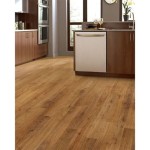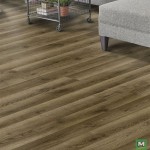Laminate flooring is a great, cost-effective way to update the look and feel of any room in your home. Its durability, ease of care and waterproof protection make it a popular choice for many homeowners. But for the best results, you need the right underlayment for your laminate flooring.
What is Underlayment?
Underlayment is a thin layer of material that lies between the subfloor and the laminate flooring surface. It provides a cushioning layer which helps absorb sound, and it also helps protect the floor from scratches and moisture, which can damage laminate flooring.
Types of Underlayment
The most common types of underlayment for laminate flooring are foam, felt, cork, and rubber. Each type of underlayment has different advantages and disadvantages and should be chosen based on the needs of your specific flooring project.
Foam Underlayment
Foam is the most common type of underlayment used with laminate flooring. It provides a cushioning layer that helps absorb sound and protect the floor from moisture and scratches. It’s also relatively inexpensive and easy to install. However, it can be susceptible to mold and mildew, and it may not be as durable as other types of underlayment.
Felt Underlayment
Felt underlayment is made of recycled fibers that are bonded together to form a dense, durable layer. It provides a cushioning layer that helps absorb sound and protect the floor from scratches, and it’s also resistant to mold and mildew. However, felt underlayment can be more expensive than foam and may not be as easy to install.
Cork Underlayment
Cork underlayment is made from the bark of cork trees and provides a cushioning layer that helps absorb sound, protect the floor from scratches, and provide additional insulation. It’s also resistant to mold and mildew, and it’s relatively easy to install. However, it can be more expensive than other types of underlayment and may not be as durable.
Rubber Underlayment
Rubber underlayment is made from recycled rubber and provides a cushioning layer that helps absorb sound, protect the floor from scratches, and provide additional insulation. It’s also resistant to mold and mildew, and it’s relatively easy to install. However, it can be more expensive than other types of underlayment and may not be as durable.
Conclusion
Choosing the right underlayment for your laminate flooring is an important part of the installation process. Foam, felt, cork, and rubber are all popular choices, and each type has its own advantages and disadvantages. The best choice for your flooring project depends on your specific needs and budget.

/laying-laminate-flooring-5c36643946e0fb0001102b5b.jpg)


/laminate-flooring-underlayment-1314969-hero-3894e0b403fb4e59a87a076e3da9914f.jpg)

![]()





/laying-laminate-flooring-5c36643946e0fb0001102b5b.jpg)


Related Posts








